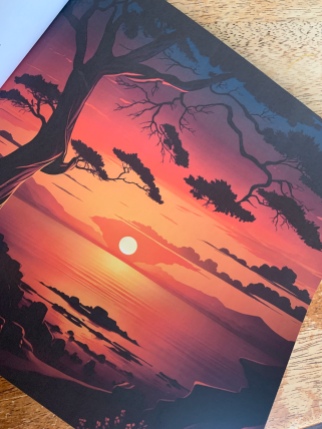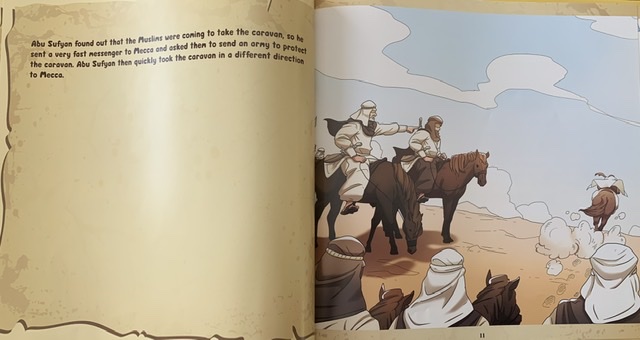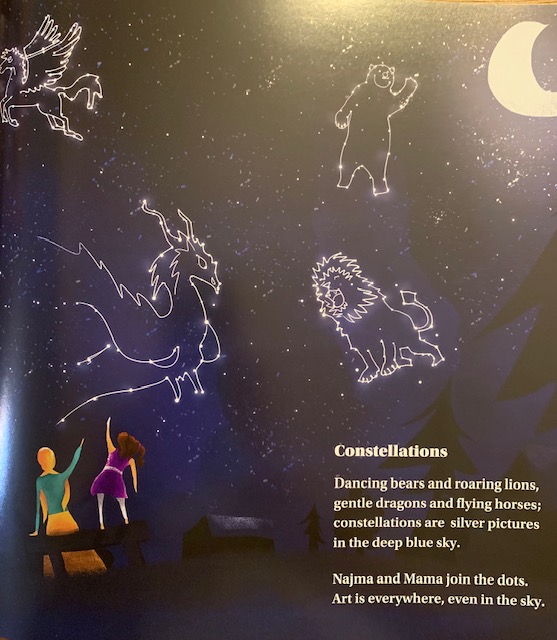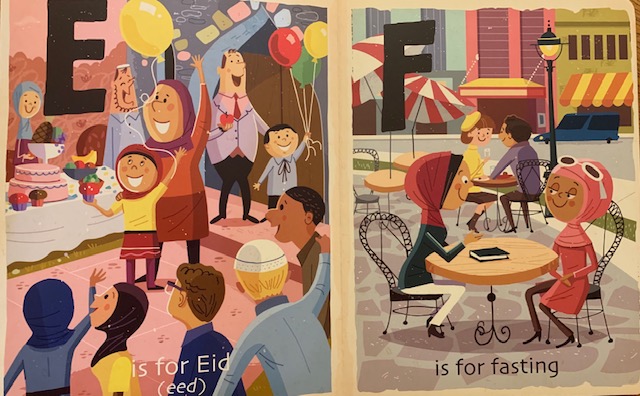

Just skip it sigh, I have strong reason to believe that this is an Artificial Intelligence (AI) written and illustrated book and it is just reads as a repetitive non fiction copy pasted Wikipedia page. I know there are worse books out there, but I love, love, love the little girl’s face on the cover, and it does nothing but mislead. It implies it is a children’s picture book, and the text does not read appropriate for children. The illustrations are also not uniform they are different styles and aesthetics and not on every page. There are errors in the text, and it repeats the same lines multiple times. There are better books out there and real author’s that benefit from consumer support that I hope this does not become the norm.
The book is broken into sections almost like a textbook. What is Ramadan?, The origins of Ramadan? (yes, there is a question mark), When is Ramadan?, How is Ramadan observed & practiced?, Rules of fasting in Ramadan, Prayers during Ramadan, Benefits of Ramadan, Where is Ramadan celebrated (no question mark), Laylat al-Qadr, Eid al-Fitr. I am terrible at grammar, but with the question marks and the random capitalization throughout the body of the text needs to be corrected “Ramadan is one of the Five Pillars of Islam,” salawat after the Prophet’s name also needs to be added.
The wording on occasion feels awkward, for example it says that “Ramadan’s origin can be traced back to the time of the Prophet Muhammad (saw),” which isn’t technically wrong, but it sure seems a weird way to say that Ramadan was prescribed to RasulAllah (saw) from Allah (swt), through Angel Jibra’eel. It notes that the starting of the month depends on the moon and thus can vary from country to country, but it then says that it falls between late May and late June on the Gregorian calendar. By the third page of text it has mentioned twice that Ramadan is the ninth month of the Islamic/lunar calendar. It also erroneously says that the sighting of the moon is done by religious authorities, taraweeh is 20 rakats, and that “children fasting in Ramadan isn’t common practice.” Clearly we all look for the moon and have protocols to have it verified, there are some varying thoughts on the number of rakats to be prayed for taraweeh, and many children of a variety of ages fast and are encouraged to do so.
I didn’t like the repeated statement that during the daylight hours food, drink, and other physical needs are abstained from. On one page it even says “refraining from eating, drinking, smoking, and engaging in intimate relationships.” This book presents as a children’s book, but it reads for more older readers and is dry and disconnected from the format of the book.

Perhaps the book has a lot of good information, but with the errors and format I have no idea how you would gleam what is accurate and who should know what. I really couldn’t get through it as the repetition was intense, the essay feel with numbered lists and bolded sub points off putting, and the pictures terrible.






































































